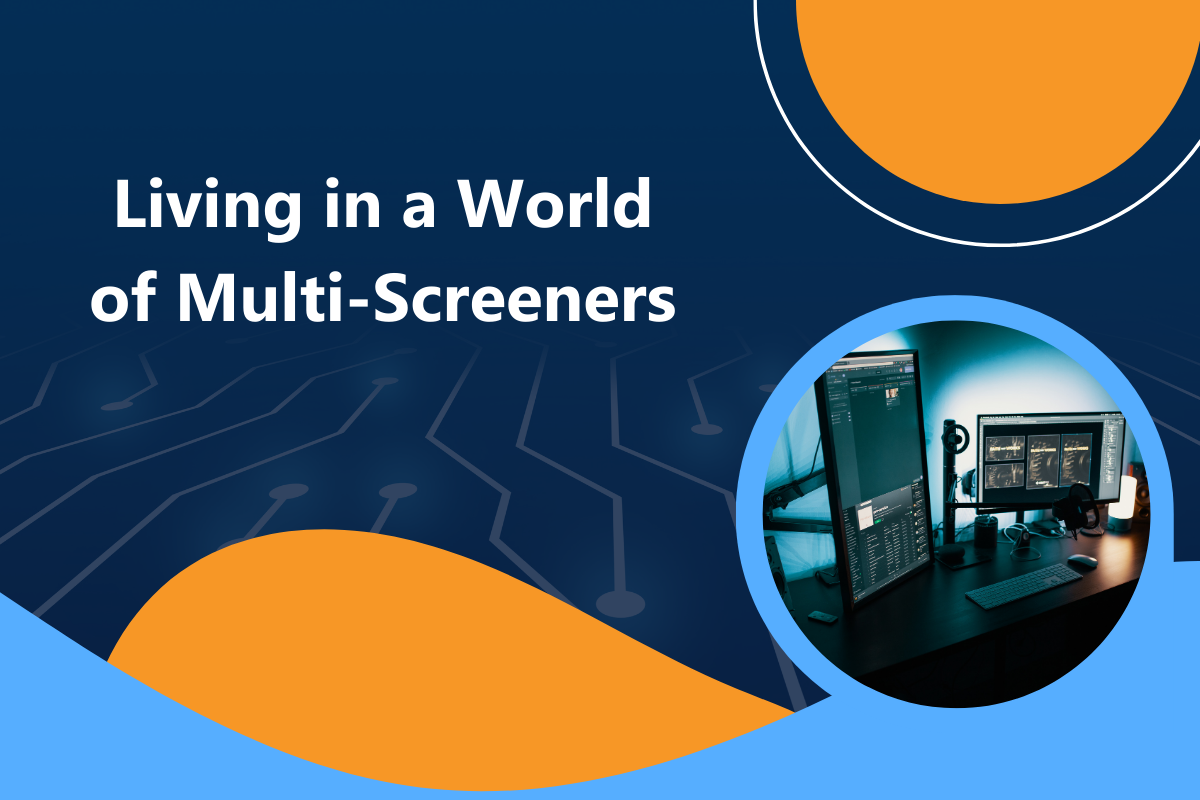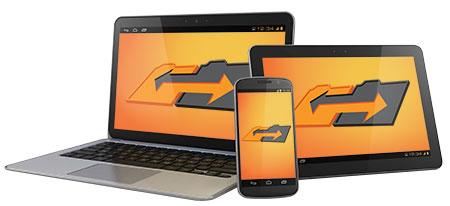Try PCmover
Please note the Evaluation copy of PCmover Enterprise requires you to be logged into a domain when testing. If you would like to test Enterprise without this requirement, please contact corpsales@laplink.com to receive an alternate copy of the software.
Thank you for your interest, and for choosing Laplink Software!
Contact Sales

Living in a World of Multi-Screeners
You’re probably multi-tasking while you read this blog. Whether you’re reading on your computer, tablet, or smartphone, chances are you’re checking one of your other devices for an email, project update, text, or Facebook notification. The reason for this, according to a study done by Google, is that we’re rapidly becoming a world chock full of multi-screeners.
What exactly is a multi-screener? A multi-screener is someone who owns and is using more than one device at the same time. Do you play games on your tablet while you watch TV? You’re a multi-screener. Do you check your phone for texts while working on a project on your PC? You’re a multi-screener.
According to the study, 90% of all our media interactions are screen-based. These interactions are divided primarily between four different types of screens: smartphone, tablet, PC or laptop, and TV. While the study shows that each device has its own personal benefit (smartphone for communication, PC or laptop for work, TV and tablet for entertainment), it also shows that 90% of consumers use multiple devices sequentially to accomplish something over time. Maybe you take a cool photo on your smartphone and transfer it over to your tablet for some editing. When you’re done, you transfer it over to your PC to print it off on professional, glossy paper.
While using multiple devices has the obvious benefits of always being connected and being more productive for a longer period of time, it also has its downfalls. How do you keep your files in sync with each other across platforms? Those of us who like to focus on work know the headaches that come with working on a PC then hopping on a tablet to finish up an important report. Some people email the report to themselves, others take part in a complicated transfer process. Some utilize a cloud service like Dropbox, but fail to notice that many of these services claim ownership of their work as soon as it’s uploaded to the cloud.
So what’s an always-connected, always-productive person to do? That’s where Laplink Sync comes in. By using Laplink Sync, people can keep all of their music, photos, and files updated on the go. By offering more connectivity options, Laplink Sync gives users the option to keep their data safe and protected from the cloud with peer-to-peer connections. And for those who maybe aren’t too tech savvy, Laplink Sync comes with an abundance of tech support including a chat line, phone line, FAQ, and online tutorials.
How do you multi-screen on a daily basis? Let us know in the comments below.
Thomas Koll, CEO

As Chairman of the Board and CEO of Laplink, Thomas guides the company’s strategic direction. Prior to joining Laplink in 2003, Thomas was Chairman of the Board for Infowave, where he was involved in interfacing with global business and financial communities. Thomas also served as Infowave’s Chief Executive Officer from February 2001 to April 2002. Prior to joining Infowave, Thomas worked at Microsoft for more than 13 years. He was Corporate Vice President of Microsoft’s Network Solutions Group where he was responsible for Microsoft’s worldwide business with telecommunication companies. Thomas was instrumental in developing Microsoft’s vision for the communications industry and led the development of strategic partnerships in mobility, broadband and hosting. Previously, he was General...
Read more about Thomas Koll, CEO...



Add Comment